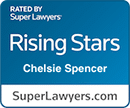Many small businesses are asking about the Paycheck Protection Program, which is a large part of the Coronavirus Aid, Relief and Economic Security Act, or the CARES Act, passed by Congress and signed by the President on March 27, 2020. The Paycheck Protection Program will provide loan assistance to small businesses and is designed similar to a grant program to be paid by the government to keep small businesses operating. The Paycheck Protection Program is essentially free money for small businesses to use to stay afloat and prevent mass layoffs as a result of the COVID-19 pandemic.
How does the Paycheck Protection Program work?
The Paycheck Protection Program is being implemented by the Small Business Administration, or SBA, which is still finalizing the rules for the program. Those rules should be in place by April 3, 2020. Companies will need to complete an application to be processed through a lender that is part of the SBA’s program, which may be as many as 1,800 different banks across the country.
What is a “Small Business”?
The CARES Act broadened the definition of a small business that is eligible to receive a loan under the Paycheck Protection Program. Any affected business can apply if it employs 500 employees or less, although there are certain exceptions made for companies with more employees. Self-employed individuals, sole proprietorships, and independent contractors are also able to seek relief, meaning that gig workers are also entitled to receive a loan. There will also be regulations that will allow additional availability for loans to businesses.
How does a small business apply for a loan?
The Paycheck Protection Program is designed to be very simple. The rules are still in the process of being written, but the business will be required to make a certification in good faith that the current economic conditions deem the loan necessary. The companies must acknowledge that the funds will be used to retain workers, maintain payroll, cover rent, mortgage, and utility payments, that no other application is pending, and that no other loan of the same type has been received. In other words, a business cannot have more than one loan through the Paycheck Protection Program.
How much money can be borrowed?
A business may borrow 250% of its average monthly payroll expenses, which is designed to cover about eight weeks of payroll expenses. The maximum amount of the loan is $10 million.
Will this loan be forgiven?
As long as the business does not lay off its employees and the loan is used to pay payroll expenses, including healthcare, retirement, state or local taxes, rent, utilities, and interest on debt obligations, such as mortgages, the loan will be forgiven.
What if a small business has already made layoffs or needs to in the future?
If the business has already laid off its employees, the business owner may need to make a decision as to whether to rehire the employees, as the company can rehire its employees and still receive the loan. If the business must lay off some of its employees after it receives the loan, then the loan forgiveness will be reduced by a percentage amount relevant to the reduction of employment. The calculation of the amount of forgiveness is quite detailed under the statute and depends on numerous factors, such as when the employees were laid off. Nevertheless, as long as a company retains some employees, there should be some amount of loan forgiveness.
What if the business has to pay the loan or a portion of the loan back?
If a small business does need to pay the loan back, the interest rate is capped at four percent. In most SBA loans, the business owner is required to guarantee the debt, and the government has a lien on the assets of the business. However, these requirements are not in the Paycheck Protection Program, meaning the business owner does not need to make a guarantee to the government or fear losing the assets of the business if it cannot pay. There are no fees that a business is required to pay for the loan. If a small business needs to pay the loan back, the maturity date will be ten years or less. The loan is excluded from gross income, meaning that no taxes need to be paid on it, although regulations may be forthcoming that limit this. To receive loan forgiveness, the borrower must certify that the funds were used to cover items like payroll, rent, utilities, and other necessary payments.
What if the business cannot pay the loan and needs to file bankruptcy?
For businesses or small proprietorships that receive funds and need to file bankruptcy later, it is important to stress that the Payment Protection Program loan is not guaranteed by individuals and is not secured or by any collateral or assets. The government does not have a lien. If the loan is not paid, it would appear to be treated as a regular unsecured debt, although businesses should work with an experienced commercial bankruptcy attorney to receive guidance on their company’s unique financial situation.
Can a small business receive the loan and reorganize in bankruptcy?
There does not appear to be a problem with businesses applying and receiving a loan under the Paycheck Protection Program and reorganizing under Chapter 11, Subchapter V, Chapter 12, or Chapter 13 of the Bankruptcy Code. In addition to providing free money to companies, for purposes of Chapter 11, a small business that has less than $7.5 million in debts, for which 50 percent arose from commercial and business activities, can file bankruptcy under Subchapter V of the United States Bankruptcy Code for a one-year period from March 27, 2020. Subchapter V allows a very inexpensive mechanism for a business to reorganize and continue to be successful.
What about individual sole proprietorships who have already filed bankruptcy?
Individual sole proprietors may also be recipients of individual emergency payments. These payments are not considered income and thus are excluded from recovery by a trustee. For Chapter 13 debtors, the payments under a Chapter 13 plan can be extended from five to seven years.
The CARES Act is an extensive document with nearly 900 pages, and it contains many provisions that may affect small businesses throughout this time of crisis. Additional legislation in the coming weeks and months may further impact companies as the situation surrounding the coronavirus evolves. To find advice and support for your business throughout this challenging time, you can depend on the Dallas law firm of Ritter Spencer Cheng PLLC. Our team of commercial bankruptcy attorneys is ready to develop a plan that meets the unique needs of your business. Contact the team at Ritter Spencer Cheng PLLC today.








